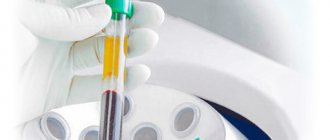There is probably no woman in the whole world who does not dream of beautiful and high breasts. And this dream is quite feasible. The only question is money and motivation.
Without a doubt, breasts should please their owner . An inferiority complex has never brought joy to anyone.
But is it worth deciding on such a serious operation? Are there really serious reasons and indications for it? What are the consequences? And what is mammoplasty anyway?
What is mammoplasty and why is it needed?
Over the past centuries, many ways to change the shape (and, of course, volume) of the breast have been invented. There were also special cosmetic procedures and products, homeopathy, clothing, folk remedies and hydromassage (which, by the way, is very effective due to increased blood microcirculation). Nowadays, mammoplasty, a surgical method, is considered the most effective method of breast correction . It implies correction of the volume, shape, contours, nipple or areola of the breast .
Many newfangled clinics and plastic surgeons, like mushrooms after rain, appearing on screens, radio and in advertising, promising “any whim for your money.” In this particular case - luxurious breasts. And quickly, with holiday discounts and safely.
A conscious decision to resort to mammoplasty is a serious step, in which mistakes can be fraught with loss of health .
It is worth remembering that for the female body, any surgical intervention is stressful. Therefore, the grounds for such a decision must be not just iron, but reinforced concrete.
Where to begin?
The most important point in preparing for surgery is choosing a clinic and doctor. I recommend researching several specialists. Visit clinics. Chat with surgeons during consultations. And only then make a choice.
Mammoplasty is a serious intervention in the female body. As with other manipulations, there is a risk of complications. Possible, including due to medical errors. That’s why it’s so important to choose an experienced specialist.
Have you studied the practice? Are you satisfied with the clinic? Then we begin to prepare for the operation.
Have you decided to undergo mammoplasty? What you need to know before the procedure!
- A prognosis for the results of mammoplasty can only be given by a professional plastic surgeon with significant experience and specific knowledge. This also applies to choosing the optimal mammoplasty option.
- At your first consultation with a surgeon, you should familiarize yourself with the results of the operations already performed.
- Possible complications, methods of preventing or eliminating them are also questions that should be asked to the doctor.
This issue needs to be studied with special care. With the exception of situations with the development of fibrous contracture, high-quality The implant is installed for life. The choice of implant is made based on the professionalism of the doctor and the individual characteristics of the woman.
Quality of implants.- Breast care after surgery . Rehabilitation period.
Why is plastic surgery of the female gland dangerous and what complications can there be?
Mammoplasty can have unpleasant complications and consequences.
Asymmetry
You can talk about the presence of breast asymmetry a couple of months after the operation. It happens that after mammoplasty one breast sank, but the other did not .
As a rule, the reasons for different breast shapes after plastic surgery are incorrectly selected or placed implants during breast augmentation, the patient’s failure to comply with the most important rules of rehabilitation after surgery, or congenital asymmetry (read about how breast augmentation surgery is performed and what types of implants there are, here). How to correct asymmetry after surgery?
Only the next surgical intervention can correct the situation, which can be performed no earlier than half a year after the previous one.
Double Bubble (double fold, waterfall effect)
A possible complication after mammoplasty is a double bubble, the so-called double breast. This problem may arise due to an incorrectly performed operation or rehabilitation period, the unprofessionalism of the doctor, or the structural characteristics of the patient. Be that as it may, a double bubble is not the result that every girl expects to see after surgery to improve the appearance of her breasts. Repeated corrective intervention can solve the problem .
Capsular contracture
A problem that represents breast deformation due to the development of dense tissue around the implant. There are a number of conditions that can cause capsular contracture. Among them:
- incorrectly selected implants;
- unprofessional operation;
- problems in the postoperative period;
- individual characteristics of the patient’s body;
- external factors.
Modern medicine distinguishes four degrees of severity of the problem, where the first degree is a variant of the norm, and the fourth is breast deformation with severe pain and a hard tissue structure. Treatment is prescribed depending on the severity; in mild cases, the problem can be eliminated using conservative methods; in more severe cases, surgical intervention cannot be avoided, during which the capsule is removed, usually along with implants.
Square chest
Square breasts can result from improperly installed implants. The situation can only be corrected by another operation .
Numbness
Numbness of the chest after surgery is another normal reaction of the body, because nerve fibers are cut during the operation. Sensitivity is restored within a period of several months to a year. However, there is a very small percentage of women who are at risk of losing breast sensation permanently.
Ripping (skin ripples)
The appearance of small folds in the skin after mammoplasty is called ripping. This problem arises due to the physiological characteristics of the patient’s structure - with insufficient skin. Waves can also be caused by incorrectly selected implants or unprofessional intervention. The defect can only be eliminated surgically.
Necrosis
Death of breast tissue due to lack of normal blood supply . Occurs in areas around implants due to improper installation.
Seroma, symptoms or signs
If, a few weeks after the operation, healing becomes suspicious, breast enlargement occurs, its deformation, and, as a consequence, redness and hematomas are observed, and the symptoms are accompanied by pain when walking and palpation - most likely there is a rare phenomenon of accumulation and stagnation of fluid in the chest and urgently requires treatment.
The cause of problems is the lack of professionalism of the doctor during the operation or the patient’s failure to comply with instructions during the rehabilitation period.
What you need to know about implants? Types of implants for mammoplasty.
The cost of an implant is not the first criterion for its selection. Selection is carried out strictly individually. The shape of modern implants is close to the natural shape of the breast - anatomical (“a frozen drop on the wall”), which will allow you to hide the contours of the implant. The only common feature for all implants is the silicone shell and purpose. Everything else depends on personal wishes and medical indications.
Today, surgeons mostly use silicone cohesin gels, which are distinguished by their homogeneous composition for the naturalness of the “new” breast and its elasticity. Disadvantage: if the implant is damaged, it is very difficult to detect a rupture of the shell due to the preservation of its shape. Plus: light weight. Implants with saline solution are considered less dangerous, thanks to the harmless, isotonic, sterile sodium chloride solution placed inside. Disadvantage: susceptible to leakage, “gurgling” effect when moving. Plus: softness, lower cost.
Endoprosthesis fillers.
. Textured implants are durable. Disadvantage: the risk of folds (wrinkles) from friction of the subcutaneous tissue on the surface of the implant. Smooth implants do not create such problems, but are dangerous with the risk of breast displacement at the most inopportune moment.
Structure
. The advantages of round implants: maintaining shape and symmetry even in case of displacement. Advantages of anatomical implants: natural appearance, thanks to the teardrop shape. The choice of shape depends on the woman’s preferences and the shape of the chest.
Form
Preliminary modeling provides an opportunity to visually familiarize yourself with the future results of mammoplasty and choose the best option.
Types of mammoplasty:
- Breast augmentation. The shape, in this case, is brought closer to the classic one, or preserved, and the volume of the breast is given according to desires.
- Changing the shape of the breast (lift). Changing the contours occurs by adjusting the skin frame and removing excess skin.
- Full breast lift and reduction. The most traumatic option, with many stitches and the inability to feed the child.
Methods of performing breast augmentation surgery
Preparation for surgery begins with choosing an implant.
According to their appearance, endoprostheses are divided into:
- round – suitable for adjusting the shape and size of the breast;
- anatomical (drop-shaped) – create the effect of a natural bust.
Depending on the filling, dentures are produced with:
- Silicone gel . The structure is elastic and holds its shape well and is not damaged during physical activity.
- Salt contents . Pillows filled with saline solution containing 0.9% salt. They are characterized by low market value and great softness.
- Biogel . The consistency of these implants is similar to the structure of blood plasma. Such endoprostheses take root well, but may leak.
The appropriate implant is selected by the doctor depending on:
- female body proportions;
- original breast size;
- structural features of the skin;
- girth of the pectoral muscle;
- problems with which the woman went to the doctor.
In addition to endoprostheses, breast augmentation can be performed using adipose tissue extracted from the woman’s thighs, abdomen or buttocks. This natural filler is not rejected by the body, but does not protect against age-related ptosis.
Depending on the type of intervention, the methods of performing the procedure and making the incision differ:
1. Installation of an implant in the periascal zone requires an incision in the pigmented area. This method allows you to enlarge your breasts, making the scar almost invisible, but is not used for women planning pregnancy and breastfeeding, as it injures the milk ducts.
The implant can be placed using:
- an anchor incision made along the nipple halo vertically down to the base of the breast and then horizontally along the muscle;
- periareolar, in the case when the skin dissection passes only along the nipple areola;
- horizontal (crescent incision) tissue excision is carried out strictly under the pectoral muscle.
2. The insertion of endoprostheses under the breast is very convenient for the surgeon, as it provides a large area of manipulation. In this case, the incision is made under the pectoral muscle. The surgeon controls the process and the operating area.
3. Under the armpit is the most progressive method, allowing to minimize the risk of side effects and tissue injury. This technique allows you to maintain breastfeeding, but is not suitable for all women due to the structure of the skin. Excessive sweating can cause prolonged healing and scar formation. This operation is not compatible with a breast lift.
Operation process:
- Selection and administration of anesthesia.
- Disinfection of the mammary gland and marking of incision sites with a marker.
- Incision of the skin with cauterization of tissue with hemostatic solutions.
- Forming a pocket for installing an implant, disinfecting the area with hemostatic swabs.
- Insertion of the endoprosthesis, its fixation.
- Sutures on internal and superficial tissues.
The duration of the procedure is from 1 to 3 hours.
Technology of performing surgery using the patient’s own fat tissue:
- Removal of fat cells through an incision in the problem area (liposuction).
- Purification of tissues from blood in a centrifuge.
- Injection of fat cells into the breast area.
The rehabilitation process for such an operation is 7 days. There is practically no swelling or hematoma. Instead of fat deposits, you can enlarge your breasts with injections of hyaluronic acid, which is similar in composition to polysaccharides found in the human body.
Why is mammoplasty done? When is it really needed?
As a rule, a woman undergoes such an operation for herself, her beloved, dreaming of admiring male gazes and swimming seasons without embarrassment or discomfort. But there are other reasons that encourage women to take this step.
and breast augmentation for personal satisfaction, which includes all the motives of a modern woman (career, love, beauty, ambition).
Striving for an ideal appearance- Medical indications.
- Change in breast shape due to asymmetry of the mammary glands
breast after surgery related to oncology.
Reconstruction- Indulging in the desires or demands of a beloved man.
First week
Most women do not need pain medications during recovery. You will slowly return to normal daily activities, but follow your surgeon's instructions. You can resume moderate walking, light desk work, etc. Sexual activity will be limited, as will any activity that increases your heart rate. Some women who work in office may return to work.
As the swelling decreases, you will see changes in shape. The skin will stretch and you may feel itchy as a result. Bruises will heal at this stage, but report any new bruises to your surgeon.
Postoperative depression is expected at this stage. Over the last seven days, your body has had to adjust to the surgery and you have been taking some medications and limiting your daily activities. You also have to deal with the emotional changes that come with seeing your body in a different light. Know that you are not alone and that many women are going through emotional and mental transformation.
When is it possible and when not to have mammoplasty? Contraindications to mammoplasty.
Indications for breast correction:
- The patient's wishes;
- Macromastia (excessive breast enlargement);
- Micromastia (underdevelopment of the mammary glands);
- Breast involution (after pregnancy, childbirth and lactation);
- Ptosis (sagging).
Contraindications for mammoplasty:
- Oncology, blood diseases, infectious diseases and serious diseases of internal organs;
- Age less than eighteen years;
- During pregnancy and breastfeeding.
Indications and contraindications for breast surgery
The reasons for mammoplasty can be very different: from a cosmetic defect associated with breast removal surgery due to cancer, injury and other reasons, to a woman’s purely personal desire to get exactly the breast that suits her with its size and shape.
In the case of mammoplasty, at the request of the patient, the surgeon will strive to satisfy her requests as fully as possible, if they do not run counter to common sense and health safety considerations. During unilateral breast surgery in patients who have undergone a mastectomy, the surgeon’s task is to restore, if possible, the previous volume and eliminate the asymmetry that arose after the operation, focusing on the parameters of the remaining mammary gland.
Indications for breast surgery are:
- A sharp increase in the size of the mammary gland while maintaining its normal location and structure;
- Too small breasts as a congenital feature (micromastia);
- Sagging, drooping of the mammary glands (ptosis) due to age-related changes, previous breastfeeding, severe weight loss after a long period of excess;
- A noticeable decrease in breast size after lactation due to involutional processes associated with organ compaction and dystrophic processes, which is not a pathology, but can create aesthetic discomfort;
- Gynecomastia (breast enlargement in males due to dishormonal and metabolic disorders).
Most often, women who are not endowed with attractive “roundness” seek mammoplasty. For them, surgery is an opportunity to find the breasts they want and get rid of the psychological discomfort and complexes that patients whose breasts are too small are often prone to.
The opposite situation, when the mammary glands are overdeveloped, also brings women to the surgeon. Excessive breast volume provokes back pain, creates difficulties with choosing clothes, and makes it impossible to sleep on your stomach. Such patients are offered reduction mammoplasty.
Breast augmentation, regardless of the purpose and method used, is always a serious and traumatic operation that requires general anesthesia and can be quite lengthy, so the list of contraindications for it is more than impressive. Among them:
- Oncopathology of any localization (except for breast plastic surgery after mastectomy for breast cancer);
- Acute infectious diseases until complete recovery (ARVI, intestinal infections, tonsillitis, etc.);
- Pathology of blood clotting (due to the risk of bleeding during or after plastic surgery);
- Decompensated pathology of internal organs (liver, lungs, kidneys, heart and blood vessels);
- Diabetes mellitus (increased risk of postoperative complications);
- Continued lactation, even if the woman is no longer breastfeeding;
- Age under 18;
- Pregnancy;
- Pustular, eczematous lesions of the skin and soft tissues in the area of the proposed incisions;
- Benign neoplasms of the mammary glands (fibroadenoma, etc.), mastopathy - during implantation;
- Mental illnesses.
The standards of beauty that gloss imposes on us lead many healthy and beautiful women to the surgeon for radical changes, but in many cases patients expect more, and the reasons for changing their appearance are quite subjective. It happens that the desired volume of surgery poses a health risk and is fraught with serious negative consequences.
In recent years, women have been striving not so much to enlarge their breasts to conceivable or unimaginable sizes, but to make them harmonious, proportional to the parameters of the body, suitable for the constitution, and size with this approach plays not the first role.
In order not to make a mistake and not to harm herself, a woman should consult with an honest and competent specialist who will assess her health condition, predict the result and choose the method of mammoplasty that is optimal in this particular case, even if it differs from the ideas of the woman herself.
Preparing for mammoplasty: what happens before and after surgery.
During the preoperative period a woman must undergo an examination , which includes a general blood and urine test, an ECG, a blood test for anticoagulants, a test for hepatitis and HIV, and an ultrasound to exclude the presence of cancer.- The operation cannot be carried out without the woman's . Two weeks before surgery, you must stop smoking and alcohol, drugs containing aspirin, and the use of hormonal contraceptives.
- Mammoplasty is performed only after restoration of the mammary gland one year after childbirth and the end of lactation.
- The recovery period after surgery depends on the type and modification of mammoplasty (in particular, on the installation of an implant under the mammary gland or under the muscles). In most cases, the rehabilitation period takes about a month. It is also recommended to follow the prescribed restrictions and periodically see a specialist.
Week 4-6
Each surgeon will have different restrictions regarding lifting, sleeping, and clothing after surgery. It is important to follow all postoperative recommendations from your doctor.
The implants are starting to look like breasts, but they are still not perfect. The breasts will continue to change. You may feel comfortable wearing more revealing clothing, but be sure to follow your surgeon's recommendations. Incisions often heal over this period of time, so begin caring for the scar. Consult your doctor about swimming and hot baths.
The nuances of mammoplasty: how is the operation performed?
The time of plastic surgery is from an hour to four hours. The operation is followed by a recovery period, which is invariably subject to a number of restrictions. discharged one day after mammoplasty.
In the first days there is postoperative swelling , which subsides after two weeks, and pain.
In rare cases, bruising. Wearing compression garments is recommended for a month after surgery. Restrictions on work and physical activity for a week after surgery.
Recommendations during the rehabilitation period after mammoplasty
The most popular questions regarding the recovery period are:
- when can you start playing sports?
- how long should you not have sex;
- how long it is necessary to observe restrictions on alcohol and nicotine;
- when you can raise your arms without harming your stitches and chest.
Let us consider in order what recommendations plastic surgery gives on these issues.
Exercise and sex
Breast tissue should recover after plastic surgery. The pectoral muscles cannot be toned often and strongly. This is necessary to ensure that recovery after mammoplasty occurs quickly. At first, the load on your hands should not be more than 3 kilograms (1.5 kilograms for each hand). You can do light chores around the house or go to work from 7 to 10 days, if your activity does not involve bending over, carrying heavy objects, or raising your arms above your shoulders.
You can return to physical activity and sports no earlier than in a month. It is necessary to consult with a surgeon before classes. It is necessary to load the muscles gradually, starting with light fitness or light loads in the gym. When playing sports, you should definitely use compression garments.
Also important is control over your body weight. During the adaptation period, it is advisable to maintain weight at the same level, without sudden weight gain or weight loss.
For 4-6 weeks, a woman should refrain from having sex. The ban is associated primarily with hormonal changes and fairly intense physical activity. During sexual tension and orgasm, a woman's hormonal levels change, and a large flow of blood enters the breasts, which can increase swelling and pain. If medical advice is not followed, the risk of implant displacement and suture damage increases.
Why you can’t raise your arms after mammoplasty
Ladies often wonder how to behave so as not to harm the silicone breast rehabilitation process. Raising your arms above shoulder level helps stretch the muscle tissue and significantly shift the mammary glands. Disturbing this area of the body, much less subjecting it to stretching in the coming weeks, is strictly prohibited.
After a two-week period, plastic surgery usually removes the strict demands on body movements. But to prevent suture rupture and worsening breast swelling, a consultation at the clinic is necessary.
Alcohol and smoking after breast surgery
After breast augmentation surgery, smoking and drinking alcohol-containing drinks are prohibited for 1.5 - 2 months.
If giving up nicotine is extremely difficult, then you need to abstain from smoking for at least 3 weeks. Nicotine causes stagnation of blood in the veins, which can cause tissue necrosis or thrombosis. Smoking also negatively affects blood circulation and wound healing.
With alcohol, everything is much stricter; the restriction period must be observed in accordance with the surgeon’s recommendations.
Reasons for prohibiting the use of alcohol-containing products after breast augmentation surgery:
- against the background of a weakened immune system, alcohol can serve as a source of exacerbation of chronic diseases;
- there is a decrease in the rate of wound healing;
- Combining prescribed drugs with alcohol can lead to disturbances in the functioning of the nervous system.
What complications occur after mammoplasty?
Any operation is accompanied by a risk of complications. Mammoplasty is no exception.
- Around the installed prosthesis, after a certain time after the operation, the body forms a capsule-shell. It can move the implant, which can result in hardening and asymmetry of the mammary glands . This problem is solved by the method of capsular contracture. When it is decided to remove the capsule, the prosthesis is removed and replaced with a new implant.
- Complications of mammoplasty can include infection, bleeding and slow wound healing . If there is bleeding, a second operation is performed to remove the blood that collects inside. To stop the spread of the resulting focus of infection, the implant is removed and replaced with a new one. As a rule, the formation of infection is characteristic of the first week after surgery.
- Exacerbation (or loss) of sensitivity of the mammary glands is one of the complications. In most cases, such complications are short-term. Although there are exceptions.
- Breast implants are required to undergo strength testing. But, unfortunately, they are not immune to collisions with sharp objects. As a result of such a collision, there is a risk of a hole being formed in the prosthesis shell and penetration of the solution or silicone into the body tissue. Usually this problem is solved by replacing the prosthesis. As for the penetration of the saline solution into the tissues, it is absorbed by the body. The danger of damage is the risk of penetration of silicone into the tissue (the woman may not feel the damage).
- If a woman has an implant, mammography only by doctors who are specially trained and familiar with the method of examining the breast with a prosthesis.
What tests are needed for mammoplasty?
- Within 1-2 weeks before the operation, the patient will need to undergo a series of tests that will identify a number of indicators that directly affect the technique of execution, the effect of the intervention, and also help ensure that there are no contraindications: General blood count. Required to detect the presence of infections in the acute stage, blood diseases. In addition, it can be used to determine the Rh factor group.
- Blood chemistry. Indicators such as the level of glucose, bilirubin, hemoglobin, various cells (erythrocytes, leukocytes), proteins, amino acids, inorganic substances and trace elements are checked. Deviations from the norm increase the likelihood of complications, the risk of inflammation during healing and other unpleasant consequences.
- Testing for the presence of certain diseases using special markers. The list includes: HIV, syphilis, hepatitis B and C.
- Study of hormonal levels. The level of a woman's sex hormones is determined.
- Pregnancy test. If the result is positive, the operation is postponed for up to six months after the birth of the child.
Stages of the operation - how is mammoplasty surgery performed?
Operation planning:
- Study of individual characteristics with subsequent conclusion and decision-making on the surgical method based on the characteristics of the breast and skin.
- Discussion of possible options for solving the required problem, risks and limitations. (The doctor must know about taking medications, vitamins and bad habits).
- Providing information about anesthesia, the cost of the operation and the technique of performing it (the insurance policy does not cover the cost of mammoplasty).
Direct operation:
The incision, depending on the structure of the breast, can be made in the armpit, along the border of the areola or under the breast. After making an incision, the surgeon separates the skin and breast tissue to create a pocket behind the chest wall muscle or behind the breast tissue. The next step is to place the selected implant into it.
Disadvantages of mammoplasty:
Long recovery period (the size of the implants is proportional to the adaptation period);- Consequences of anesthesia (nausea, etc.) on the first day after surgery;
- Pain that must be relieved with analgesics every six hours;
- The need to wear compression garments for a month (including nights during the first two weeks);
- Traces of postoperative sutures . The size of the scars depends on the characteristics of the skin, the size of the prostheses and the talent of the surgeon;
- Refusal of active sports (basketball, swimming, volleyball) and training on exercise equipment with load on the muscles of the shoulder girdle;
- Quitting cigarettes (nicotine has a detrimental effect on blood circulation and blood flow to the skin);
- Avoidance of saunas and baths. For at least two months after surgery. In the future, it is necessary to monitor the temperature of the steam room - it should not exceed one hundred degrees;
- After the operation, doctors recommend not to become pregnant for a long time . At least six months. After six months, planning a pregnancy is allowed, but it is worth remembering that caring for the breasts and nipples will have to be carried out more carefully and scrupulously;
- Risk of complications (inflammation, infection, hardening, breast deformation);
- Changing implants every ten to fifteen years (recommendation of plastic surgeons);
- Significant material costs ;
- Discomfort and certain inconveniences when the new breast volume is too large.
Tip 4: Follow simple rules
One to two months before surgery:
- Normalize your daily routine. Get more sleep and rest. Avoid stressful situations.
- Reduce physical activity.
- Watch your diet. Try to choose foods rich in vitamins. Avoid salty, spicy, sweet and fast food.
- Buy underwear and clothes for the rehabilitation period. The necessary list will be provided by the doctor during the consultation.
- Warn relatives about the operation and rehabilitation features. They must understand that after mammoplasty you will need special care and attention.
Naturally, this is only general information about preparation. During the consultation, the specialist you choose will tell you everything in much more detail. And depending on the characteristics of your body, he recommends procedures to prepare for breast surgery. Follow them and everything will go great.
Breastfeeding after mammoplasty surgery
Is it possible to breastfeed a child after mammoplasty? No one can predict what exactly will happen during pregnancy and childbirth, given the operation performed. All organisms are individual. Of course, a woman whose biography includes the fact of undergoing mammoplasty should carefully approach both pregnancy planning and examinations, the pregnancy itself, the birth of the child and its feeding. You can’t do this without expert advice.
During pregnancy, the following changes occur in the mammary glands:
- Darkening of the skin around the nipples (and the nipples themselves);
- Darkening of blood vessels (occurs due to increased blood flow to the chest);
- Breast augmentation;
- Yellow discharge (or colostrum);
- Increased breast sensitivity;
- Raising of the glands on the surface of the peripapillary region;
- Protrusion of veins.
Expectant mothers whose pregnancy occurs after mammoplasty should take care of their breasts with great diligence . It will be useful to attend special classes for pregnant women for this situation, do exercises, properly organize your diet and do not forget about massage and contrast showers.
According to plastic surgeons, implants do not cause harm to the child’s health. But still, we should not forget about the risks associated with the presence of these prostheses in the chest (unexpected injury to the implants can harm the health of both). Therefore, nursing mothers should undergo breast examinations more often to exclude this kind of situation.
Psychological attitude
Many people are afraid of surgery, they are afraid of the consequences of anesthesia, of an unsuccessful operation. For some, the thought of a long, painful recovery makes them uncomfortable.
Such anxiety has a very negative impact on the body. You need to feel good physically and mentally before going for mammoplasty.
It is important to remember:
- what advantages the operation will give;
- how many external and internal psychological problems will it solve;
- how many opportunities for the joys of life a new, beautiful breast will give.
Find out what the price of mammoplasty is.
What do complications of unsuccessful mammoplasty look like? Read on.
When will breasts shrink after mammoplasty? See more details.
Indications for surgery
Aesthetic satisfaction with one's own breasts is just one of many reasons for indications for breast mammoplasty. Read on to learn about what mammoplasty is and who has direct medical indications for it.
Breast doctors and plastic surgeons identify a number of reasons for performing mammoplasty, plastic surgery on the mammary gland. Here are some of them:
- Breast size 1. The only way to correct imperfections with breasts that are too small is through surgery.
- The absence of one or both mammary glands due to the removal of cancerous or benign tumors.
- Breast deformation or trauma (may occur as a result of an accident).
- Pronounced asymmetry (if the mammary glands differ by more than a couple of sizes)
- Ptosis, pseudoptosis. Marked sagging of the breasts. One of the reasons is multiple births.
- Tubular breast. This pathology is congenital.
Surgery in these cases is a necessary measure to combat the physical imperfection of the female breast.
However, breast surgery will not be a solution for all women. There are some contraindications for its implementation.
Mammoplasty
The materials in this section will help you understand the variety of aesthetic and reconstructive breast surgeries, learn about the methods of performing them, indications, recovery period and average prices.
Mammoplasty (breast surgery) is the general name for the entire group of plastic surgeries to change the size and shape of the breast, as well as correction of the nipples and areolas. The most popular of them is endoprosthetics, i.e. installation of implants. This area is traditionally considered exclusively for women, but in some cases men can also become patients - for example, when eliminating gynecomastia or as part of a complex of gender reassignment surgeries.
Types of mammoplasty
| Operation | What's the point? |
| Breast augmentation – augmentation mammoplasty or endoprosthetics | Installation of implants, with the help of which you can increase the size of the breast and tighten it a little. Today, plastic surgeons have a wide variety of implants at their disposal in terms of type, shape and size, the selection of which is carried out individually for each patient. There are also several options for their placement (under the pectoral muscle, under the mammary gland, or combined). |
| Breast reduction – reduction mammoplasty | Allows you to get rid of excess volume, heaviness and a number of other troubles that excessively large breasts bring to the body. It is considered a rather complex operation to perform, as it involves not only removing part of the mammary gland, but also excision of excess skin and moving the entire nipple-areolar complex to a new position. Reduction mammoplasty is not recommended for women who plan to have children in the future, since after it is performed, the possibility of breastfeeding is lost. Breast reduction surgery in most cases is performed for medical reasons, but there is also an aesthetic component. Men often resort to it to treat gynecomastia. |
| Breast lift – mastopexy | Indicated for women with severe prolapse of the mammary glands. This problem can occur with age, due to the effects of gravity, large bust size, after pregnancy and breastfeeding, intense exercise without proper bust support, sudden weight loss, etc. If sagging breasts have led to the appearance of stretch marks, they can also be eliminated as part of this operation. |
| Correction of the nipple-areolar complex | Changing the shape and size, eliminating asymmetry and other defects of the nipples and areolas. Usually combined with other types of breast surgery. As with reduction mammoplasty, it is not recommended for women planning a future pregnancy, since the operation may result in the loss of the ability to breastfeed. |
| Removal or replacement of breast implants (reendoprosthetics) | The average “lifespan” of endoprostheses used for breast augmentation is 10 years. Nothing will happen to the implants themselves, but, with a high probability, by this time they will shift downward under the influence of gravity, which will not have the best effect on the shape of the bust. In this case, an operation is performed to remove them and, if the patient wishes, replace them. A similar intervention may be necessary if the woman is not satisfied with the result of the first endoprosthetics operation and she wants to return everything “as it was”, or replace the implant with a more modern and high-quality one, as well as if complications arise that cannot be eliminated by other means (including serious capsular contracture ) or if it is necessary to enlarge the breast by 3-4 or more sizes at once - in the latter case, the correction is carried out in several stages, during each of which an increasingly voluminous implant is placed. |
| Correction of congenital or acquired breast defects | Most often it is performed to eliminate asymmetry (a situation where one breast is significantly larger than the other) and tubularity (when one or both mammary glands have the shape of a tube). Here we are not talking about completely independent operations - depending on the situation, for example, installation of implants of different sizes in combination with a lift or reduction of one of the mammary glands with simultaneous nipple plastic surgery can be carried out. Examples of such operations with photographs of the results can be viewed at this link. |
| Breast reconstruction | Surgical restoration of the mammary gland lost as a result of injury or during treatment for cancer. May involve both the installation of an implant and the use of a musculocutaneous flap taken from the lower abdomen |
How is breast plastic surgery performed?
- Mammoplasty begins with an in-person consultation, at which the surgeon, together with the patient, specifies the problem, plans the nature and scope of the intervention, selects implants (for breast augmentation or correction), etc.
- There are several options for access (location of surgical incisions) - in the inframammary fold, along the border of the areola, in the armpit and even around the navel. Each of them has its own advantages and disadvantages; for more details, see the article by Ph.D. Vadim Bakov “Types of accesses for mammoplasty”
- In almost all cases, with the exception of simple isolated corrections of the nipples and areolas, general anesthesia is used.
- The duration of the operation depends on its complexity. One of the simplest - breast augmentation - is performed by the most experienced surgeons in 20-30 minutes, while, for example, reduction mammoplasty can last up to 4 hours.
| Photos before and after mammoplasty - breast augmentation and lift with installation of implants: | |
How is rehabilitation going?
Full recovery after breast plastic surgery takes about 4 weeks. During this time, a number of restrictions will need to be observed:
- wear compression garments around the clock;
- sleep only on your back to prevent accidental injury and/or displacement of the implant;
- refuse hot baths, saunas, swimming pools, gyms, solariums and the beach, limit physical activity;
- do not wear tight or constrictive clothing;
- Avoid any intense impact on the mammary glands.
It will be possible to evaluate the final result in 2-3 months, when the stitches are removed, bruises and swelling disappear, and the severity of the scars decreases. The effect of the operations lasts about 10 years, provided that the patient maintains her weight category, leads a fairly healthy lifestyle and does not expose the body to unnecessary stress.
The best mammoplasty surgeons
| Blokhin Sergey Nikolaevich Doctor of Medical Sciences, one of the most famous domestic specialists, has been practicing since 1987. Currently he accepts patients in his own clinic, the Frau Klinik. Performs all types of mammoplasty, incl. the most complex operations for breast reconstruction (his master's and doctoral dissertations were devoted to them, and he developed and patented his own method based on them).
|
| Sergeev Ilya Vyacheslavovich Candidate of Medical Sciences, founder and leading surgeon of the DoctorPlastic clinic, which is considered the best Russian specialized mammoplasty center. Specializes in breast augmentation and complex cases of breast correction (asymmetry, ptosis, tubularity, repeated operations, etc.)
|
| Bakov Vadim Sergeevich Candidate of Medical Sciences, colleague of Dr. Sergeev at the DoctorPlastic clinic. 20 years of practice and more than 1000 aesthetic breast surgery operations, each of which, according to Vadim Sergeevich, is unique and different from the other.
|
Contraindications, possible complications and side effects
Factors excluding mammoplasty:
- Pregnancy and lactation (as well as about 1 year from the date of cessation of breastfeeding - during this period the size and shape of the breast can change significantly, which makes the result of the operation unpredictable).
- Any (including benign) neoplasms in the breast, mastopathy, etc. – in this case, you must first get rid of the tumor and only then think about plastic surgery.
- Malignant neoplasms of any location.
- Any acute diseases, as well as chronic diseases in the acute stage.
- Bleeding disorders or taking anticoagulants.
- Diabetes.
- The patient's age is under 18 years.
The most common adverse effects of breast surgery are:
- The formation of capsular contracture around the installed implant, which distorts the shape of the breast and can cause constant pain.
- Soft tissue infection.
- Formation of keloid and hypertrophic scars.
- Painful exacerbation or loss of sensitivity of the mammary glands.
- Rupture of the implant shell, its deformation or displacement.
- For more information, see the article “Complications after mammoplasty”
| Photos before and after mammoplasty - breast reduction and breast reconstruction after mastectomy: | |
Seamless breast augmentation – plastic surgery without seams or scars
The unique technique of breast augmentation allows not only to completely hide any traces of the operation, but also significantly reduces its trauma and the duration of the rehabilitation period. Find out more about this technique...
Photos before and after mammoplasty
In our gallery you can see examples of the work of famous Russian plastic surgeons, which illustrate the results of breast plastic surgery. Photos before and after mammoplasty will allow you to compare your expectations with real results, and for each image the contacts of the plastic surgeon who performed the operation are indicated:
- Photos before and after breast augmentation
- Photos before and after breast lift
How much does mammoplasty cost? Current prices
The patient's expenses depend mainly on the complexity of the operation performed - everything is individual and discussed exclusively during a consultation with the selected surgeon. The cost of implants is paid separately (sometimes it is already included in the final amount, sometimes not - this point must be clarified in the clinic):
| Prices for mammoplasty in Moscow, rub. Breast augmentation: | |
| Average | 205.060 |
| Minimum | 22,000 rub. (Dr. Stolyarzh Alexey Borisovich) |
| Maximum | 898,000 rub. (Dr. Teplyashin Alexander Sergeevich) |
| Breast reduction: | |
| Average | 211.498 |
| Minimum | 24,700 rub. (Dr. Stolyarzh Alexey Borisovich) |
| Maximum | 930,000 rub. (Dr. Lobkov Alexey Alexandrovich) |
| Breast lift: | |
| Average | 183.061 |
| Minimum | 24,000 rub. (Dr. Stolyarzh Alexey Borisovich) |
| Maximum | 650,000 rub. (Dr. Soldatov Oleg Anatolyevich) |
| Plastic surgery of nipples and areolas: | |
| Average | 60.535 |
| Minimum | 14,500 rub. (Dr. Teleshov Sergey Borisovich) |
| Maximum | 178,000 rub. (Dr. Filatov Alexey) |
| Breast Implant Replacement: | |
| Average | 173.738 |
| Minimum | 25,000 rub. (Dr. Stolyarzh Alexey Borisovich) |
| Maximum | 400,000 rub. (Dr. Dmitriev Andrey Viktorovich) |
| Breast reconstruction: | |
| Average | 256.250 |
| Minimum | 50,000 rub. (Dr. Efimenko Alexander Vitalievich) |
| Maximum | 600,000 rub. (Dr. Egorova Maria Vladimirovna) |
Reduction mammoplasty
This type of breast surgery is used when it is necessary to reduce its size in order to get rid of conditions that cause discomfort to a woman, for example, pain in the back, neck, chest, curvature of the spine, itching in the inframammary fold, diaper rash under the breasts and much more.
In addition to size reduction, reduction mammoplasty also allows:
- Make your bust taller and more toned.
- Restore breast symmetry.
- Tighten your nipples and reduce the size of your areola.
- Restore the shape of the mammary glands after lactation and pregnancy.
- Increase your self-esteem thanks to the beautiful appearance of your breasts.
As a rule, the duration of such an operation is from 3 to 5 hours. Reduction mammoplasty is performed under general anesthesia. The whole operation is divided into several stages:
- Precise markings are applied to the skin of the chest.
- Skin incisions are made on the mammary glands.
- The size of the areola is determined.
- Excessive areas of skin are cut off.
- Excess fat deposits are cut off, as well as glandular tissue, if necessary.
- The nipple is moved to a higher position, while ensuring the safety of the vascular bundles and nerve bundles, as well as the milk ducts.
- Finally, deep sutures are applied, and then cosmetic external ones.
The shape and size of the incision during surgery will depend on the amount of excess skin on the mammary glands that needs to be cut off. The incisions can be vertical for a small amount of removal. If more than 500 g of iron needs to be removed, a T-shaped incision is made.
After such an operation, a woman can be discharged from the clinic on the second day. But after this, you need to come for a consultation with a specialist in about one week, if a visit has not been previously agreed. External sutures are removed after 1-2 weeks. For six months after the operation, scar formation is observed, which becomes almost invisible over time.
A woman can return to work no sooner than 3 weeks after surgery. If we talk about hard physical labor or sports, then after breast surgery it is forbidden to engage in physical activity for two months.
During the entire recovery period, it is necessary to wear special compression garments, and also protect against possible pregnancy.
It is also necessary to take into account that the following complications may occur after mammoplasty:
- Necrosis of areola and nipple tissue.
- Formation of rough scars.
- Suppuration and bleeding.
What is it, pros and cons
Mammoplasty is a type of surgery to correct the shape and size of the breast. The specialist changes the contour, volume of the mammary glands, and the shape of the nipples. Before undergoing plastic surgery, you should weigh the pros and cons of the female breast correction procedure.
The advantages include:
- the ability to correct physical defects after illness (oncology);
- prevention of problems with the spine (reduction of large breasts);
- increasing personal attractiveness.
The disadvantages of mammoplasty are considered:
- postoperative scars;
- unpredictable reaction to anesthesia;
- risk of developing infection;
- long recovery time;
- pain in the postoperative period;
- difficulties in undergoing mammography;
- risk of implant rupture;
- loss of sensitivity.
Women undergo surgery to correct imaginary or real defects and increase self-esteem. There is an opinion that breast correction helps improve your personal life. This judgment is not justified. Doctors in some cases refuse patients, referring them to a psychologist.
Bust mastopexy
Mastopexy is a breast lift that is performed in cases where the mammary glands have lost their shape. During the operation, the position of the areola and nipple is repositioned, excess skin is removed and breast tissue is redistributed. As a result of these actions, the bust acquires a natural, harmonious shape.
The duration of such an operation will depend on the complexity, it varies from 2 to 4 hours. The procedure is performed under general anesthesia. The location of the stitches on the chest will depend on how much it has lost its shape. If the bust has been lowered slightly, then incisions are made on the side or around the nipple. If the mammary glands sag significantly, then incisions will have to be made from the areola to the fold under the breast below, as well as inside the fold.
As a rule, after surgery, pain continues for another 2 weeks, but the bust will take its final shape in one week.
Such plastic surgery also carries some danger . The main complications of such a surgical intervention may be necrosis of the areola tissue, as well as loss of sensitivity in its area.










